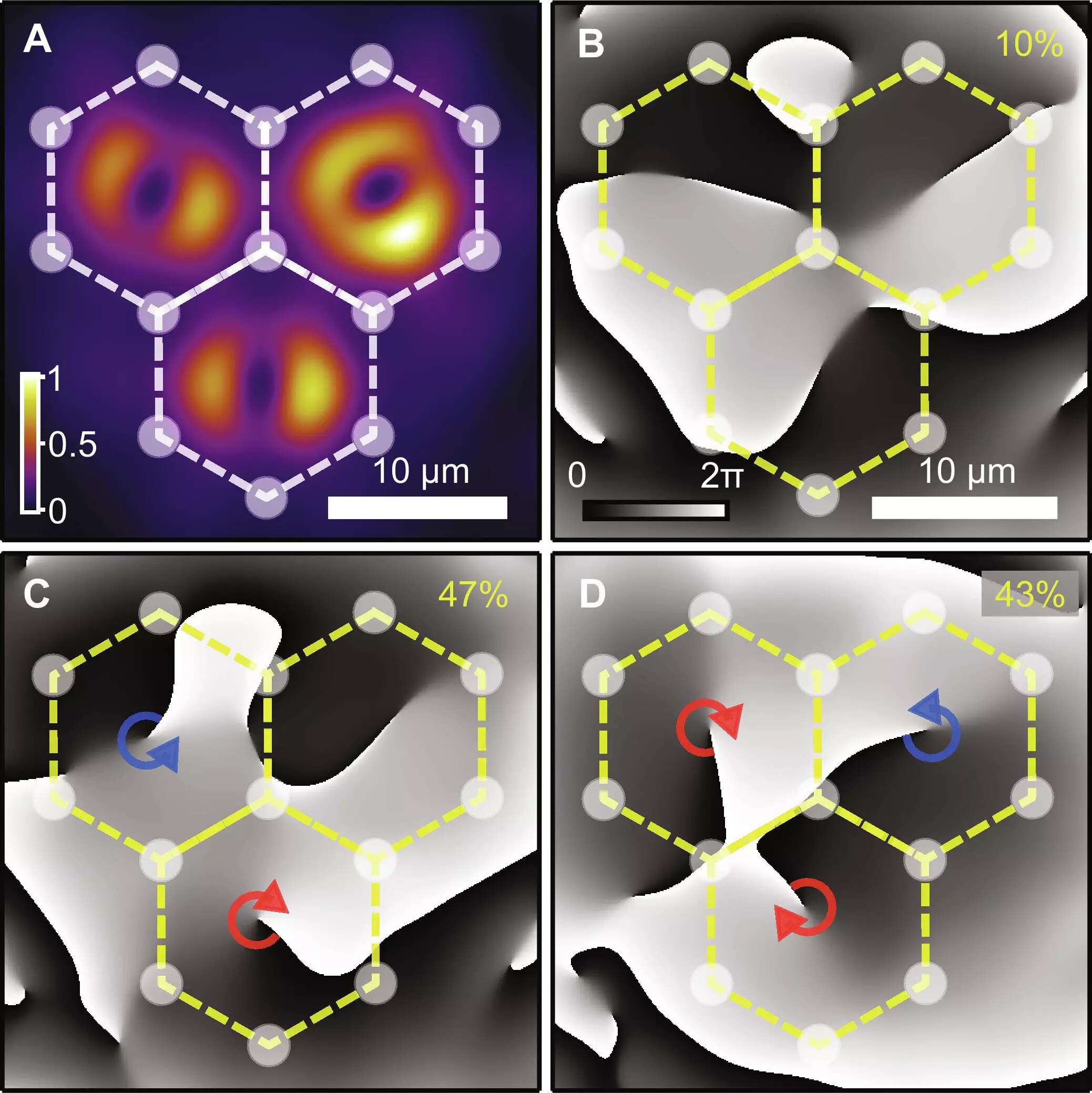Quantum mechanics has long been a fascinating field of study, offering unique insights into the behavior of particles on a subatomic scale. Recently, researchers from Skoltech, Universitat Politècnica de València, Institute of Spectroscopy of RAS, University of Warsaw, and University of Iceland have delved into the spontaneous formation and synchronization of multiple quantum vortices in optically excited semiconductor microcavities. This groundbreaking research sheds light on the intricate dynamics of polariton quantum vortices in structured artificial lattices made up of coupled polariton vortices.
The study involved the creation of a triangular lattice consisting of 22 cells, wherein trapped polariton condensates were induced optically within each cell, with each carrying a single-charge vortex. By employing a semiconductor planar microcavity – a resonator formed by two highly reflective mirrors with InGaAs quantum wells in between – the researchers were able to generate quasiparticles known as exciton-polaritons or microcavity polaritons. These coupled states manifest as a result of the strong-light matter coupling regime, demonstrating the intricate interplay between excitons in quantum wells and confined cavity photons.
The researchers utilized a technique of spatial light modulation to shape a laser beam into an array of tightly focused Gaussian beams arranged in a hexagonal lattice. Through varying lattice parameters and adjusting excitation power, they observed the condensation of polaritons inside the lattice cells. Intriguingly, in a pair of neighboring cells, the vortices displayed an antiferromagnetic coupling behavior, with opposite topological charges in each cell. This phenomenon was further investigated in a triangular three-cell structure and a larger triangular lattice of vortices, revealing the complex dynamics of the system.
One of the challenges faced by the research team was the statistical analysis of a vast experimental dataset to substantiate their findings. The observation of vortices synchronizing in small frustrated clusters hinted at an extended antiferromagnetic order within the triangular lattice. To confirm this hypothesis, the researchers measured the orbital angular momentum of each condensate across all lattice cells and correlated the data with the low-energy configurations of the Ising spin Hamiltonian. Remarkably, the orbital angular momentum in the stable solutions of the vortex lattice exhibited significant correlations with the low-energy solutions of antiferromagnetically coupled Ising spins, validating the presence of antiferromagnetic order in the system.
The study on the spontaneous formation and synchronization of quantum vortices in semiconductor microcavities represents a significant advancement in the field of quantum mechanics. The insights gained from this research not only contribute to our understanding of complex quantum systems but also pave the way for the development of novel platforms for simulating condensed matter phenomena. With further exploration and refinement of experimental techniques, future studies may uncover even more profound insights into the fascinating world of quantum mechanics.

